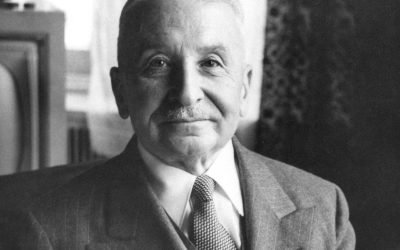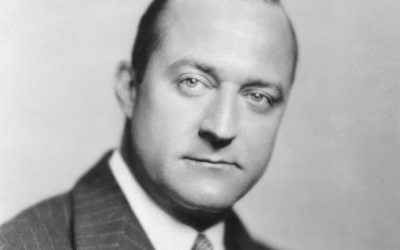What we have learned about the free market can be applied to a number of cases in which the free market does not or for a time did not exist in our country. A brief consideration of these cases will both illustrate the principle of the tendency of the rate of profit toward uniformity and provide a demonstration of the value to be gained by extending the free market.
Government Farm Subsidies
Consider the case of government farm subsidies. Let us imagine that the government stopped buying up farm products to be stored or given away and at the same time reduced taxes by the amount of money it saved in abolishing the farm subsidy program.
The effect would be a drop in the demand for farm products. But since the taxpayers would now have the money previously used to pay the subsidies, there would be a rise in the demand for a host of other products— products which the taxpayers judged would satisfy the most important of their needs or wants which previously had had to go unsatisfied, such as an extra room added on to a house, a newer or better car, extra education, and so on, depending on the needs and desires of the various individuals concerned. The immediate effect of this shift of demand would be to depress prices and profits in farming and to raise them in these various other industries. The further consequence would be a withdrawal of capital and labor from farming and their transfer to the production of these other goods.
The movement of capital and labor out of farming would take place until the rate of profit in farming was raised back up to the general level, and the rate of profit earned on the various goods in additional demand by the taxpayers was brought down to the general level. Until this result was achieved, incentives would exist for a further movement of capital and labor out of farming and into these other fields. When the process was finally completed, therefore, the rate of profit earned in farming would be on a par with the rate of profit earned everywhere else. In accordance with the uniformity-of-profit principle, it would simply not be possible for the rate of profit in farming to be permanently depressed. It follows from this analysis that in the long run those who remained in agriculture would tend to earn, on average, the same level of income they had earned before the repeal of the subsidies. Even the incomes of ex-farmers would, on average, come to be on a level comparable to what they had been initially. This would be the case as soon as the former farmers acquired industrial skills on a level comparable to those they had possessed in agriculture and so could take appropriate advantage of the new employment opportunities created by the expansion in the demand for industrial goods. The one permanent difference that would now exist and which would be of benefit to everyone, farmers and ex-farmers included, would be that the taxation of everyone’s income would be smaller and everyone would be enabled to buy more of the goods he himself desired. Instead of everyone being forced to spend a part of his income, through the government, for the purchase of farm products to be uselessly stored or given away, he would be able to spend that part of his income for industrial goods of value and importance to his life. And those goods would be produced by the capital and labor previously employed in producing the farm products.
* * *
In sharpest contrast to the beneficial effects the uniformity-of-profit principle brings to the abolition of farm subsidies, are the further harmful effects it leads to if farm subsidies are retained. Insofar as the subsidized prices are above the costs of producing additional agricultural output by more than is necessary to provide the going rate of profit, the incentive is created to increase production. The incentive is created to increase production all the way to the point that any further increase would have to be carried out under conditions of such diminishing returns and need to resort to land of inferior quality, that higher costs of production would finally offset the receipt of the artificially higher farm product prices and bring the rate of profit in agriculture down to the general level in this way. To reach this point, the government would have to purchase and store truly immense quantities of agricultural commodities. It would not only run out of grain elevators, as it did, but also probably run out of caves and the holds of mothballed ships, to which it has actually turned for use as supplementary storage facilities. And, not to be overlooked, its budget would be thrown substantially further out of balance.
To avoid these consequences, the government is led to seek ways to limit the increase in production its policy of farm subsidies makes profitable. Thus, it restricts the number of acres that can be planted. It may require that the growers have a special license in order to grow a crop. To a large extent the effect of this policy is to allow inefficient, high-cost producers to go on producing while prohibiting production by more efficient, low-cost producers. In a free market, the low-cost producers would expand production, drive the price down, and force the high-cost producers out of business. But this cannot happen when the price is prohibited from falling and the government restricts production.8 This added policy of restricting production, of course, represents a blatant infringement of the right of people to use their own property as they see fit. And it has even taken such bizarre forms as imposing fines on farmers for growing food to feed to their own animals. The rationale for this outrage is that such food production makes it possible for the farmers in question to avoid buying feed and thus with the same feed production reaching the market imposes on the government the need to make additional purchases to maintain the price of crops used as feed. Thus individual liberty is sacrificed in order to hold down government expenditures which are absurd in the first place. In effect, the government begins by playing the role of a fool and ends by becoming a tyrant.
As a result of farm subsidies, until very recently a major portion of agricultural output was worse than wasted—it was used to sustain Communist regimes around the world through being given away to them for nothing under such programs as “Food for Peace,” or in exchange for funds provided to the Communist regimes by private banks under loans whose repayment was guaranteed by the U.S. government. In sustaining these regimes, which would otherwise have fallen many years ago from a lack of food supplies caused by the inherent nature of socialism, the farm subsidy program perpetuated the need for large-scale defense spending, in order to be able to provide security against the permanent policy of aggression of such regimes. [8 Cf. Henry Hazlitt, Economics in One Lesson, new ed. (New York: Arlington House, 1979), pp. 114–15. ] It thereby operated to multiply the burden of taxation far beyond its own, direct cost.
A related consequence of the existence of agricultural surpluses which would otherwise rot, and which the government’s restrictions on production have served merely to diminish, not eliminate, has been the encouragement of public dependency and unemployment in the United States. These are results of the food stamp program, which provides large numbers of American citizens with the ability to obtain free food, and thus acts as a major public welfare program, enabling many people to live without working.
* * *
I chose the example of farm subsidies mainly to illustrate how the free market reacts when the profitability of an industry is initially rendered low. Farm subsidies, however, represent a form of price controls different from the kind we shall predominantly be concerned with in the first half of this book. Farm subsidies are a way the government achieves artificially high prices. They are an illustration of legal minimum prices—that is, prices below which the government prevents the producers from selling. They are comparable in their effects to minimum wage legislation. They cause unsaleable surpluses—which, in the case of labor, means unemployment. I deal with such price controls further and at length in the second half of my book Capitalism, in the discussion of unemployment and depressions.
Rent Controls
The kind of price controls that we want to focus on first, because they are most directly relevant to the subject of the dependence of the division of labor on capitalism, are controls designed to keep prices artificially low—that is, legal maximum prices or ceiling prices, namely, prices above which one is not allowed to sell.
Thus let us take as a second major illustration of the effects of the repeal of price controls, the consequences that would follow if rent controls were repealed. To simplify this discussion, let us assume that the entire supply of rental housing in a given locality has been under controls. In this case, the first effect of the repeal of controls would simply be a jump in all rents. As a result of the jump, however, rental housing would again become profitable—in fact, as a result of previously inadequate building due to rent controls, extremely profitable. However, it is impossible that the rental housing industry should be permanently more profitable than other industries. The high rate of profit would be the incentive, and would itself provide much of the means, for expanded investment in the rental housing industry. There would be a building boom in rental housing. As a result, the supply of rental housing would be stepped up and the rents and the profitability of rental housing would begin to fall and would go on falling until the rate of profit in rental housing was no higher than the rate of profit in industry generally. The long-run effect of the repeal of rent controls, therefore, would simply be an increase in the supply of rental housing. Rents themselves in the long run would be no higher than corresponded to the costs of constructing and operating apartment houses, with profits only enough to make the industry competitive, by providing the going or average rate of profit.9
Exactly the same effects would follow the repeal of price controls on crude oil, natural gas, or any other good. There would be a temporary surge in price and profit, followed by expanded production and a reduction in price and profit to the point where the price corresponded to the good’s production cost and allowed only enough profit to make the good’s production competitive. The repeal of the price controls on domestically produced oil and oil products in the United States in 1981 provides an excellent illustration of this proposition. After a temporary surge in its profitability, followed by a major expansion in domestic production and fall in the price of oil and oil products, the American oil industry ceased to be extraordinarily profitable.
Of course, it should not be forgotten that once a price control is repealed, the dynamic effects of the uniformity-of-profit principle take over. As we have seen, if someone wants to make an above-average rate of profit on a free market, he must strive to reduce his costs of production and improve the quality of his products, and repeatedly succeed in doing this ahead of his rivals. This means that in the absence of controls, costs and prices tend steadily to fall—if not in terms of a depreciating paper money, then nevertheless in terms of the time people must spend to earn the money to buy goods. Once controls are repealed and a free market established, the free competitive quest for high profits causes prices to fall further and further below the point at which they were controlled, while the quality of goods rises higher and higher.
It should be obvious that the repeal of rent controls would act to end New York City’s housing shortage and make possible an enormous improvement in the quantity and quality of housing for the average person in New York City, and continuing improvements thereafter. It should be equally obvious that the repeal of price controls on crude oil and on natural gas, if not sabotaged by such measures as the government’s physically closing off the sources of an expanded supply of energy, act to set the stage for growing supplies of these goods and thus 9 I must point out that it is an error to assume that the repeal of rent controls would create any kind of insuperable problems of short-run hardship. Indeed, I will demonstrate later on that even before sufficient time went by to make possible the construction of any additional new housing, the overall effect of the repeal of rent control would be to improve the conditions of more people than it worsened and to impose no greater hardship on those who had to give up their rent-controlled apartments than was already being experienced, and had been experienced for many years, by just as many other people precisely as the result of rent controls. On this point, see my book Capitalism, chap. 7, pt. B, sec. 6, the second-level subsection “The Case for the Immediate Repeal of Rent Controls.” for a return to America’s traditional abundance, indeed, growing abundance, of energy supplies.
In sum, it should already be clear, even at this stage of our knowledge, that the problems we have experienced in these areas have been the result of government controls and that the solution lies with the extension of economic freedom and thus, among other things, of the ability of the profit motive and the price system to operate to achieve their benevolent consequences. More broadly, the solution lies with the intensification of the capitalist elements that have traditionally characterized the economic system of the United States, and which have been increasingly restricted.
Of course, the ability of the profit motive and the price system, and other essential elements of capitalism, such as saving and capital accumulation, to achieve continuous economic progress, should not be thought to be hindered in any fundamental way by a possible lack of natural resources. Nor should such economic progress be thought to be dangerous or undesirable by virtue of “harming the environment.”
I have already demonstrated in Chapter 3 of my book Capitalism, how capitalism operates continuously to increase the supply of economically useable natural resources along with the supply of products. In the same place, I have also shown how the inherent nature of production is to make the chemical elements provided by nature, and which constitute the totality of the physical world, stand in an improved relationship to man—that is, to improve his environment.
This series is adapted from Reisman’s Capitalism: A Treatise on Economics, Chapter 6, The Dependence of the Division of Labor on Capitalism, “Profits and the Repeal of Price Controls”




